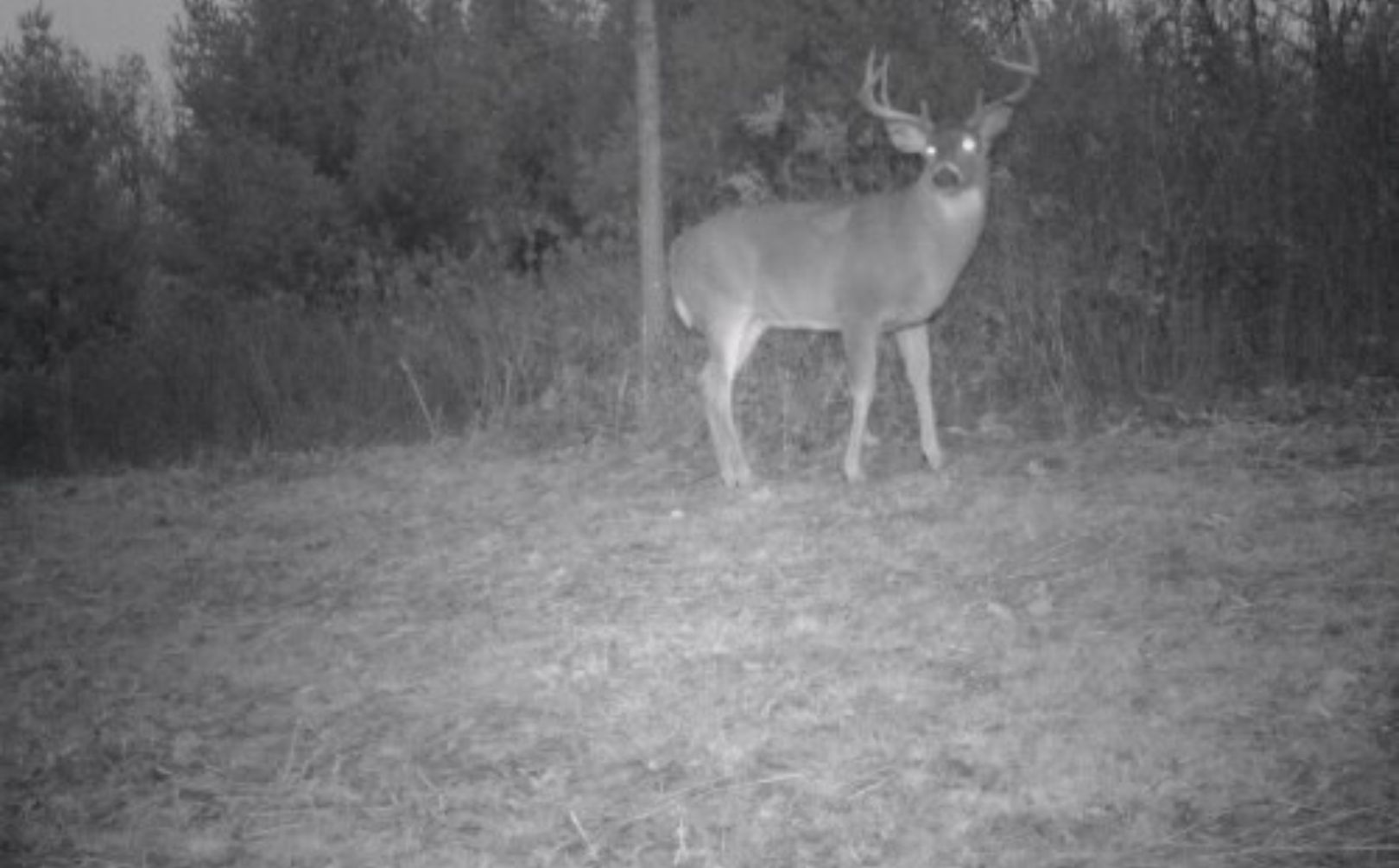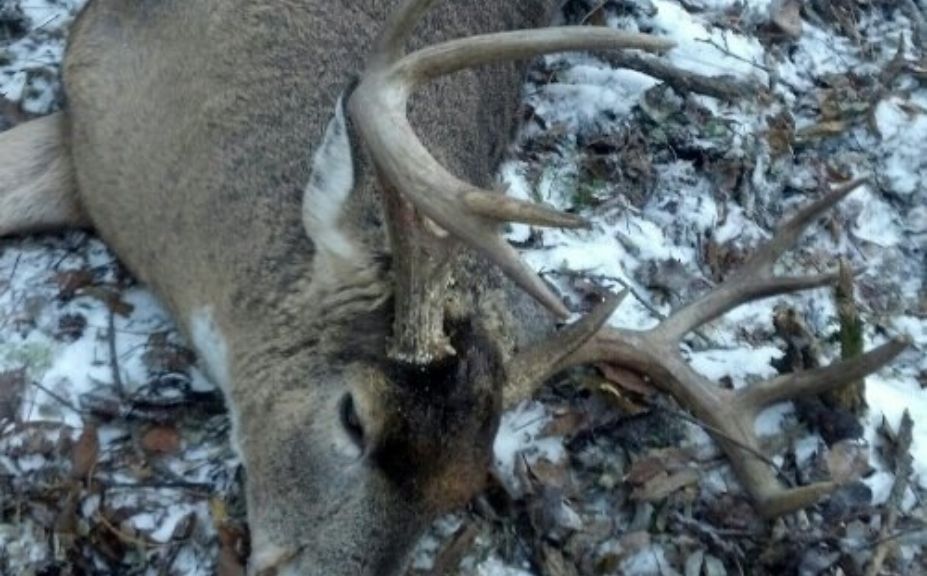
Do you personally use game cameras (cam) for a scouting tool? Boy...I hope that you do! Game cam use is an extremely non-invasive strategy to capture mature buck behavior patterns that you can not come close to observing in any other way. I still find it extremely puzzling when I hear about guys not using game cams, and I can't help but think of a parallel for the few folks left who don't use a cell phone. With blackout models designed to be quiet, scent free and hidden from the wary eyes of both mature bucks and does, you have a lower chance of spooking a deer than actually accessing your treestand. If you design your camera locations with your stand positions in mind, changing an SD card on the way to or from a stand can leave absolutely zero human impact. During the last 15 years I have developed such a level of confidence while personally experiencing indifferent 4-8 year old buck reactions to game cameras, that I trust them completely to even place them within bowshot of some of my most remote and unpressured bowstand locations. However, even though I now place them very close to my bowstands, the observations I experience while hunting in no way compares to the behavior that I capture in the exact same location while scouting by game cam!
Accuracy
During the late 90s and early 2000s, capturing a few thousand pictures a year cost hundreds of dollars and the highest level of efficiency you could hope to achieve was when you used a roll of 36 exposure film, in place of 24. Those older game cams sure weren't cheap either! The sample size was also extremely limited, the process to use was fairly invasive, and if you adjusted your camera settings to last a week you could take 5 pictures a day, at best. Wow, in the last 15 years the game cameraclimate has sure changed substantially! Now, taking a sample of 1000s of pictures from 1 location over the course of a month or less is the norm, and it typically takes 10s of thousands of pictures before an SD card wears out. Also, those 1000s of pictures can be taken without ever visiting the camera (if you can stay out of the woods), the scent and sound of the old 35mm cameras is gone, and there is no flash or IR bulbs showing to potentially spook deer. Game camera prices have been reduced, the cost per picture has decreased to just a fraction of a cent, and the quality of most game cameras has increased by several times. For the past few years, game cameras have literally created an opportunity to be your eyes in the woods for as many locations that you have the resources for, giving you the ability to non-invasively scout the local deer herd for 24 hours a day.
How many deer do you see while hunting? Hunting logs are cool to reflect on and make great deer-camp memories for years to come. The problem with hunting observations though, isn't the deer that you see, instead it's the deer that you don't see. Several mature deer that I have enjoyed taking part in both the observation and the harvest, were never seen through the eyes of the hunter until the moment of the harvest. For some mature bucks, that meant up to 5 years of pictures before 1 glimpse of the animal, and within that 1 glimpse the opportunity had to count! At the same time, the majority of those bucks offered just a handful of pictures per year. If we were to draw our conclusions from hunter observations alone, we would only discover a fraction of not only the # of mature bucks that frequent the lands that we hunt, but the overall iindicatted buck age structure of the herd and sex ratios would be completely inaccurate.
Timing of Buck Use
When do mature bucks show up on your land? Are they there during the early season, but not late? What about during the middle day instead of the middle of the night? What does it all mean? Well, if you use a game camera, you can begin to unravel the clues to not only when and where you should sit in a stand at the current moment, but you can discover the strengths and weaknesses of your habitat as well as your hunting approach.
1. Use by season.
Typically if bucks are here today...gone next week, it is a reflection of various habitat needs. Where do the deer end up? What are the differences in habitat with where they prefer at various times of the year, let alone during the season?
2. Use by time of day.
I found it incredibly helpful over the years to find out that we were more likely to capture mature buck movements during shooting hours, than during the middle of the night. This told us that the surrounding lands attracted the local deer herd during the night to feed due to great habitat, but the effects of hunting pressure was incredible! We found through the eyes of a game cam that deer will prefer safe food average quality food, over unsafe high quality offerings every single time-during the daylight.
3. Do deer really go nocturnal during the middle of October?
You may find that the lack of deer sightings are completely parallel to when you hunt, with a deminishing return on total game pictures the more that you hunt the land. It's amazing how many deer begin to show up on game camera when a piece of hunting ground hasn't been hunted in 2 weeks or more!
Location
Sure, you can scout during the off-season and find mature buck sign, deer travel corridors and bedding areas, but exactly when was all of that sign left in the woods? As I mentioned before there have been some bucks that we saw 1 time in several years, and that was only at the point of the harvest encounter. But that isn't a rarity! For personal hunting stats I typically get to see 2-3 mature bucks per year, and I harvest 1-2. That's a pretty low # of mature buck sightings. So if someone were to ask me where a buck is traveling from based on hunting observations, well...I typically couldn't have an answer for them because you can't locate what you can't see, and you wouldn't know to even try to locate a particular buck when you don't have a picture of him, or other visual sighting.
Your ability to define exactly where a mature buck prefers to spend his daytime hours can easily be predicted through the use of a game camera-and that includes if he is located on your neighbor's land! As a general rule if he comes from a given direction and does not reach your land until the middle of the night...he is coming from a 1/2 mile to a mile away or more. If he is visiting your land within 2 hours after dark, it is very likely that he chooses to call your immediate neighbor's land his home. But regardless of the distance he is coming from the direction can be extremely evident. If you have 100 acres and 7 game cameras, you can determine a very definitive daytime location a buck is traveling from when you are only capturing his picture from 2/7 cameras, regardless of the direction he is moving within the picture itself.
Conclusion
Game cameras offer much more than just a pretty picture on your computer, tablet or smart phone. The above picture is just one example, but it represents 1 of only a handful of pictures taken over 3 seasons, that helped my son and I pinpoint the location for a 2013 WI rifle season opener sit for a buck that didn't actually call the land that we hunted his home. We set out on our early morning trek in 2013, to specifically harvest that particular buck in the location that we sat, even though in 3 season we had never seen that buck. Each year we had less than 5 pictures of that mature giant, but they were enough to draw very definitive conclusions to where he lived during the day, when he would potentially use our property and where he would travel from to get to the land that we hunted.
If you haven't practiced scouting by game cam, I can't wait for you to give it a try! On the otherhand, if you use them regularly I challenge you to use your cameras to discover the more intimate and personal observations of mature buck behavior that are available 24/7. Gone are the days of noisy and stinky intrusions of the 35mm invasion into the remote portions of your favorite deer habitat. It's 2014 and like a cell phone, deer cams are here to stay and can be a welcome addition to your tools of the harvest!
